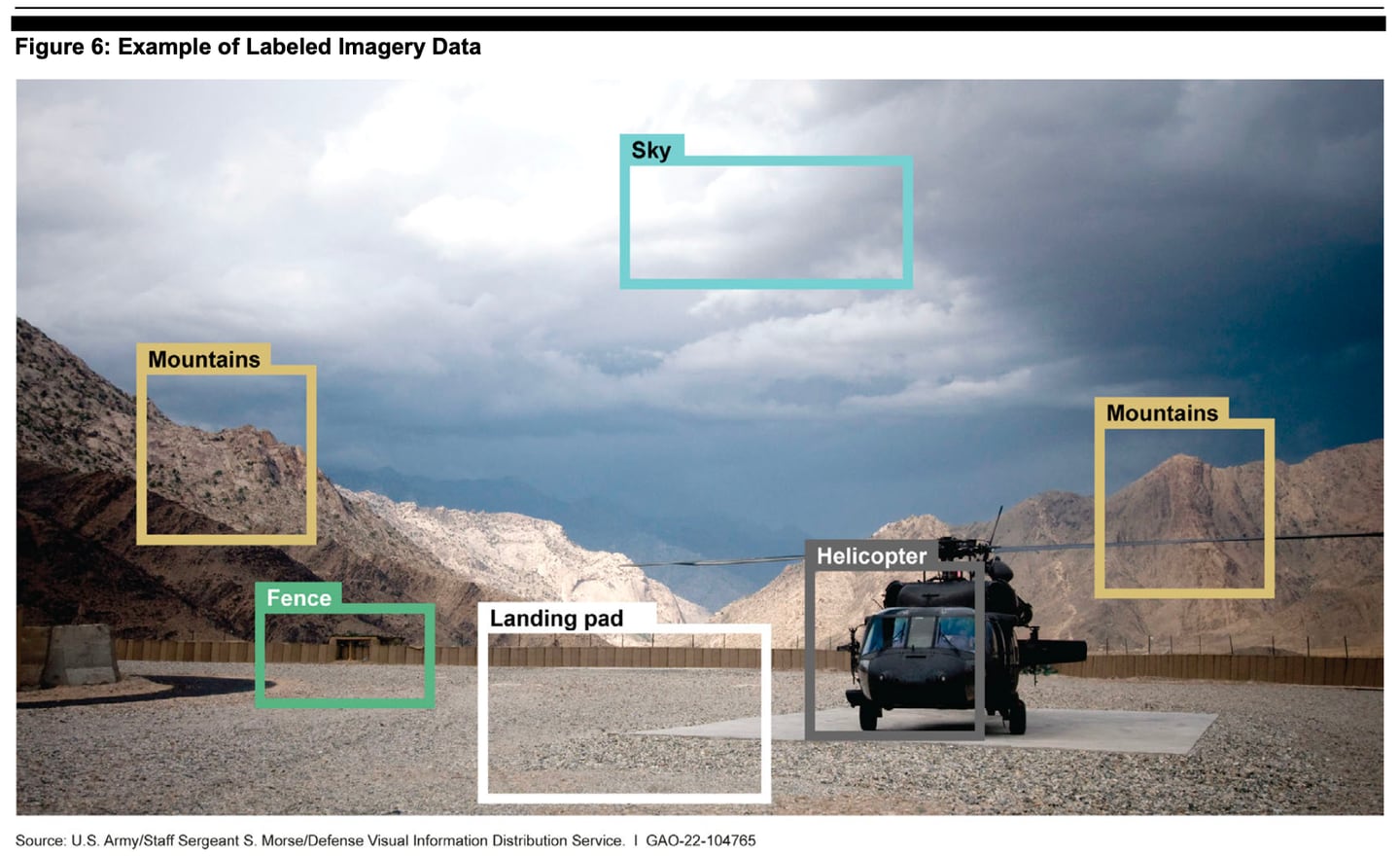WASHINGTON — The Department of Defense is juggling more than 685 artificial intelligence projects, including some associated with major weapon systems, like the MQ-9 Unmanned Aerial Vehicle and the Joint Light Tactical Vehicle.
Artificial intelligence ventures are underway across several services and combatant commands, with the U.S. Army leading the pack, according to a list published last week by the Government Accountability Office, a federal auditor of agencies and programs.
At least 232 projects are being handled by the Army. The Marine Corps, on the other hand, is dealing with at least 33.
For combat purposes, in particular, the Pentagon is focused on AI abilities that aid target recognition, battlefield analysis and autonomy aboard uncrewed systems. For example, the Joint AI Center is working on a smart sensor, which aims to identify threats and relay footage to analysts, while the Navy is developing the Undersea Warfare Decision Support System, meant to help plan and execute undersea missions.
While the project tally publicized this month does not offer the most exacting look at Pentagon AI projects — it only includes those funded via procurement and research and development — it does underline just how consequential AI will be for the industry and troops of the future.
“AI capabilities will enable machines to perform tasks that normally require human intelligence, such as drawing conclusions and making predictions,†GAO wrote in a Feb. 17 memo to Senate Armed Services Committee leadership. “Moreover, AI-enabled machines can be expected to maneuver and change tactics at speeds that human operators cannot.â€
Officials, though, have said defense AI is currently nowhere close to outthinking or outflanking humans. Existing programs require extensive programming and training, which require mountains of data and computing power.

The Defense Department considers artificial intelligence a modernization priority and has invested in it, though the exact sum is unclear; AI is often a slice of a larger program, and classified activities can muddy the disclosure waters. But, for fiscal year 2022, the department requested $14.7 billion for science and technology programs, the GAO noted, as well as $874 million to “directly support†AI efforts.
The National Security Commission on Artificial Intelligence early last year concluded the U.S. must take AI seriously — the powerful technology “is going to reorganize the world,†the commission said, and “America must lead the charge.†Challenges already exist from Russia and China.
Historically, the Defense Department has struggled with onboarding new capabilities that depend upon complex software, the Government Accountability Office said, and artificial intelligence is no different. Integrating the software-centric tech into weapons and networks not initially designed for it will be challenging, and building trust among personnel will take time, among other complications.
“As DoD’s AI capabilities mature,†the GAO said, “officials from the military labs told us that the department is likely to face difficulties with transitioning these capabilities to the end user that are similar to those experienced with other emerging technologies.â€
The Defense Department published its initial inventory of AI projects in April 2021, spurred by congressional interest. The GAO in a separate report this month suggested the department develop a system to better catalog and track the projects.
Colin Demarest was a reporter at C4ISRNET, where he covered military networks, cyber and IT. Colin had previously covered the Department of Energy and its National Nuclear Security Administration — namely Cold War cleanup and nuclear weapons development — for a daily newspaper in South Carolina. Colin is also an award-winning photographer.








